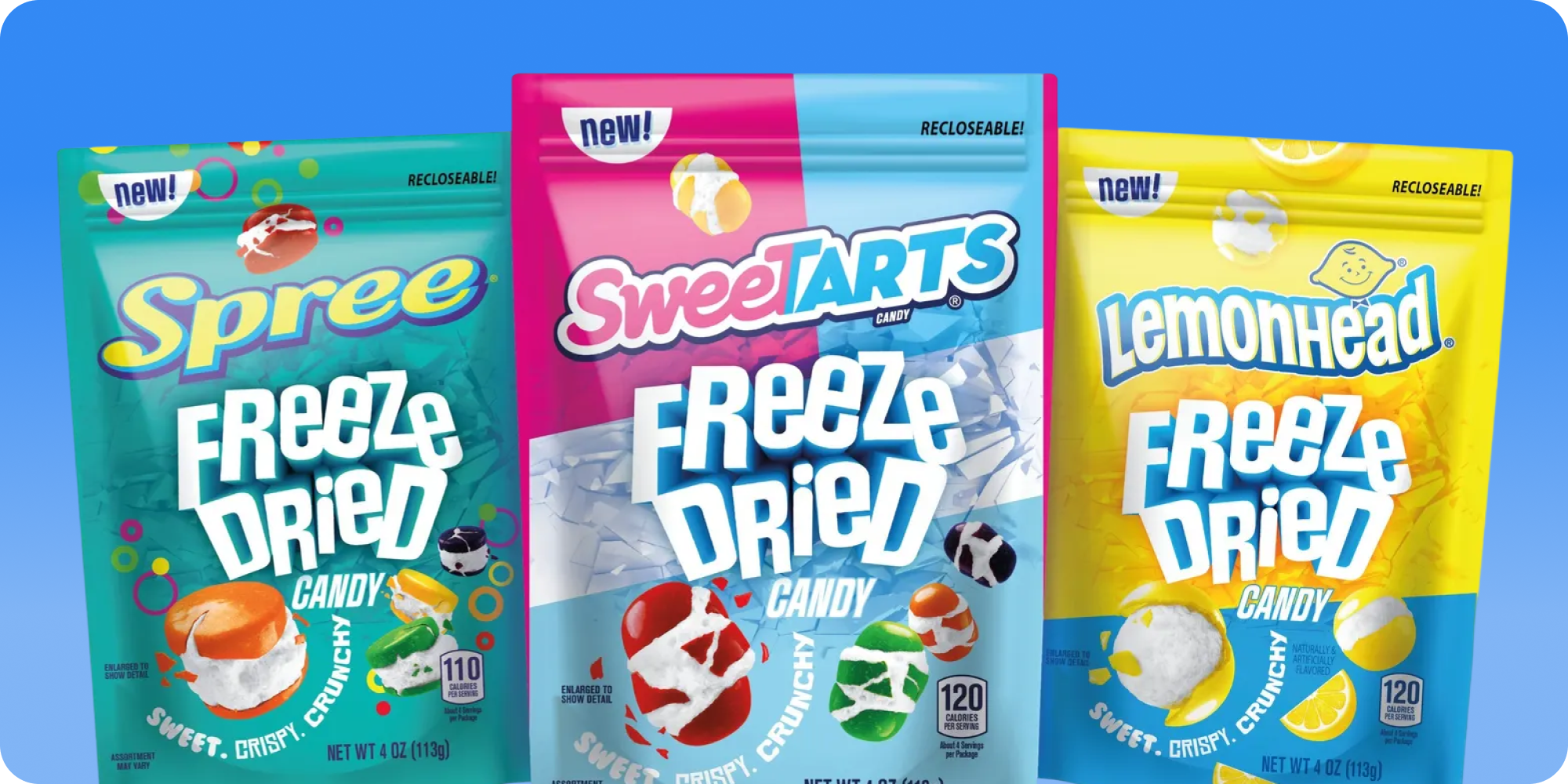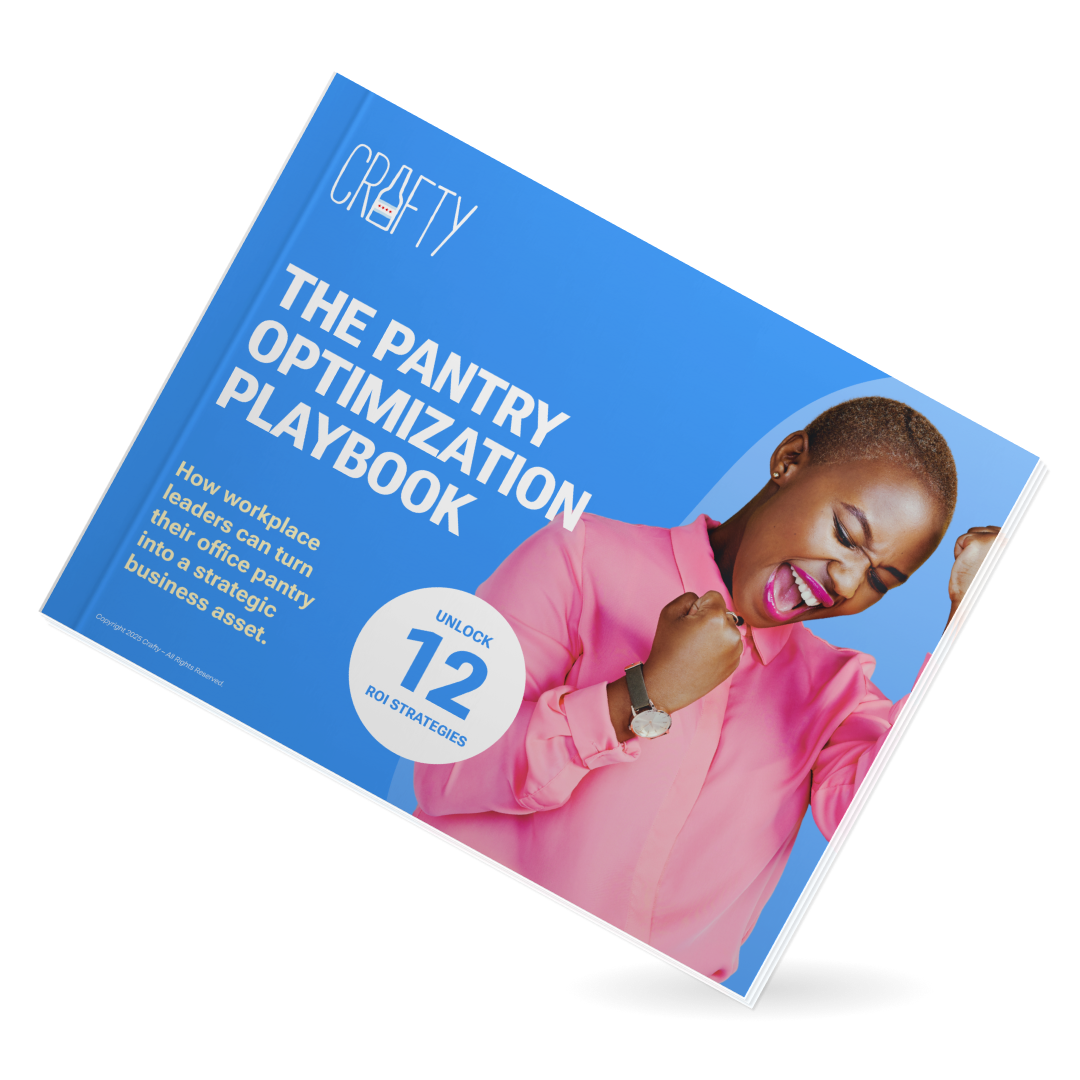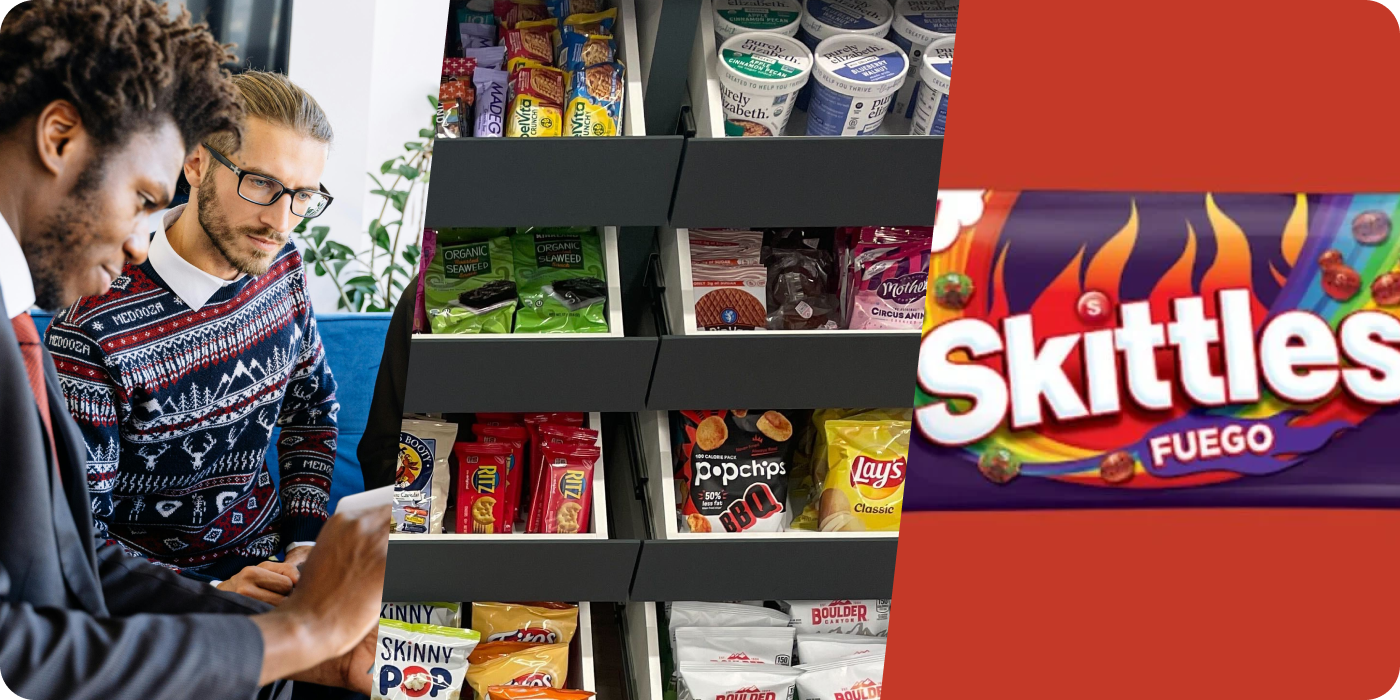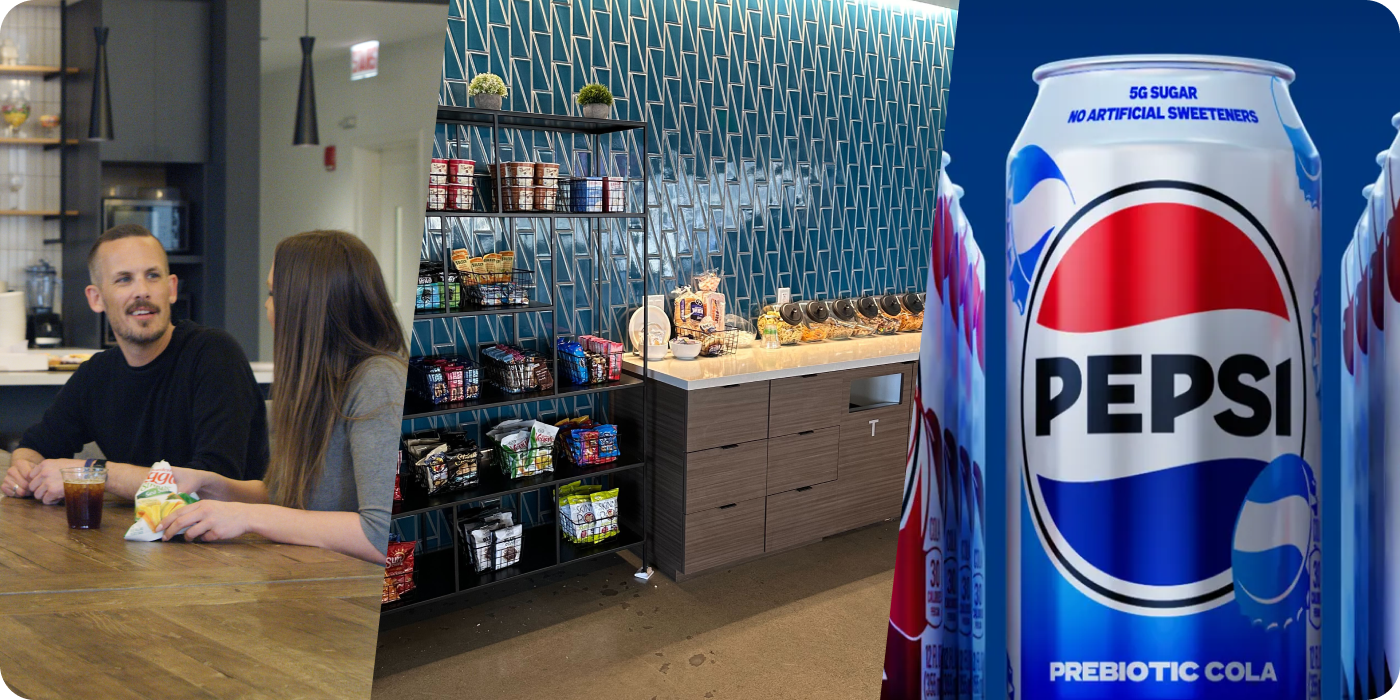October Workplace Insights: Attendance Milestones, Dehydration Stress, and Freeze-Dried Candy Craze
How office returns, wellness science, and snack innovation are reshaping the workplace pantry.
✍️ Written by Rebecca Ross
🕚 8-Minute Read • Published Tuesday, September 30, 2025
![Trends for your corporate food service [October 2025] Trends for your corporate food service [October 2025]](https://info.craftydelivers.com/hubfs/Trends%20for%20your%20corporate%20food%20service%20%5BOctober%202025%5D.png)
The office pantry is no longer just about snacks. It’s where culture, wellness, and strategy collide. From New York surpassing pre-pandemic attendance, to new science linking hydration and stress, to TikTok-fueled trends like freeze-dried candy, the signals are clear: employees expect more from the workplace, and the office pantry is one of the most visible places to deliver it.
Office Attendance Hit a Major Milestone
New York becomes the first major city to surpass pre-pandemic office traffic.

Office attendance just hit a turning point. In 2025, office visits in New York City increased 1.3% above 2019 levels, according to Placer.ai. That milestone makes NYC the first major US market to fully rebound. Finance-heavy industries helped drive the comeback, with mandates and culture playing a decisive role. But while NYC leads, other markets are still finding their footing.
Who’s driving the shift:
- Fortune 100 companies: More than half now require employees back in the office full time—up from just 5% two years ago, according to CBRE.
- Policy enforcement: 69% of companies now track attendance compliance, and 37% have taken enforcement action—more than double last year.
- Hybrid maturation: 72% of employers say they’ve met attendance goals, most aiming for three days per week or more.
- Industry drivers: Finance and banking are fueling New York’s rebound, while professional services are powering growth in Miami.
Hybrid has matured from ad hoc flexibility into predictable rhythms shaped by collaboration needs, client demands, and leadership culture. Offices are no longer filling sporadically; they’re becoming structured, strategic environments where employees expect the experience to be purposeful and worth the commute.
The tea: As office attendance rises, so do expectations. This is why employers are competing aggressively for Class A and Trophy spaces, according to CoStar. The demand for top-tier offices is so strong that prime vacancy is more than four percentage points lower than nonprime, with limited availability in hubs like Manhattan, Silicon Valley, and uptown Charlotte. Companies are downsizing square footage before they downgrade quality, which is proof that premium space has become the baseline for attracting and retaining talent.
With the flight-to-quality in full swing, premium space requires premium amenities, and the pantry is one of the most visible and frequented amenities a workplace has. It’s a strategic asset that, when powered by data and run with intention, makes in-office days more appealing and aligns with the experience-first approach that attracts and retains talent.
Crafty’s Q2 Office Pantry Benchmarks show how this pursuit of quality is shaping pantry programs across industries:
- Financial Services averaged $20,150/month, leaning into protein-forward staples like dried fruit, nuts, and trail mix (+123% YoY) to fuel long, compliance-heavy workdays.
- Fintech led all sectors at $25,945/month, prioritizing macro-friendly snacks and functional beverages like Fairlife Core Power, Think Jerky, and Fage Greek Yogurt.
- Professional Services averaged $13,748/month, with bars claiming 14% of spend, balancing functional nutrition with indulgent picks like UnReal Peanut Butter Cups.
The industries powering office rebounds in cities like New York are the same ones aggressively hiring AI talent. Financial services, fintech, and professional services are competing for the next generation of engineers, data scientists, and product specialists, and they’re using premium offices and premium amenities as part of their playbook. The pantry isn’t just fueling workdays; it’s a competitive signal in the fight for the talent that will define the next decade of the workplace experience.
UNLOCK MORE ROI FROM YOUR PANTRY
This playbook outlines 12 proven strategies to create efficiencies, reduce waste, maximize spend, and drive a quality experience that accelerates your organization.
Dehydration Could Be Stressing Your Team
Even mild dehydration can trigger cortisol spikes up to 50% higher.

Stress is one of the most expensive and disruptive forces in the workplace, and new science shows hydration may be an overlooked lever. A new study found that participants with the lowest water intake experienced cortisol spikes up to 50% higher than their hydrated peers during stressful situations. The dehydrated group didn’t just feel more stressed in the moment; their bodies also stayed in a heightened stress state longer, increasing the risk of chronic issues like anxiety, depression, and cardiovascular disease over time.
Poor hydration compounds what leaders already know: stress is draining productivity, morale, and retention.
- Burnout and absenteeism: Stress accounts for about 1 million absences daily in the US. Nearly 50% of North American workers report feeling stressed every day.
- Mental health at work: 76% of employees say they’ve experienced emotional distress from work in the past year, with unresolved depression alone cutting productivity by 35%.
- Economic impact: Depression and anxiety cost the US $1 trillion per year in lost productivity.
Chronic stress is a workplace infrastructure issue. If employees are operating in a dehydrated, stress-heightened state, the costs ripple across performance, engagement, and company culture.
The tea: The secret to stress management might be hiding at the watercooler. Crafty data shows workplaces are allocating 27% of pantry spend to beverages and a 90% increase in units ordered in 2025. Companies are going beyond plain water, bringing in options that keep people hydrated longer and more effectively.
- Sparkling water breaks the monotony of plain water, encouraging more frequent sipping throughout the day. Despite a common myth, carbonation does not dehydrate you. Research shows carbonated water hydrates the body just as effectively as still water. The fizz simply adds sensory variety, which helps employees drink more consistently and avoid the underhydration that builds up during long workdays.
- Juices and coconut waters naturally replenish electrolytes like potassium and sodium, which regulate fluid balance and help prevent fatigue. They also provide quick carbohydrates that stabilize energy during long work sessions.
- Added electrolytes boosts hydration efficiency by helping the body retain fluids. Electrolytes are minerals such as sodium, potassium, magnesium, and calcium that regulate how water moves in and out of cells. When levels are balanced, the body absorbs and holds onto fluids more effectively, preventing the mild but cumulative dehydration that builds up during long stretches of work. They also support nerve signaling and muscle function, which explains why employees often feel more alert and energized after replenishing electrolytes.
This mix supports hydration on multiple levels by preventing stress-related cortisol spikes, sustaining energy, and reducing decision fatigue by offering convenient, varied, and functional choices right in the workplace.
Top hydration products in Crafty-powered pantries across the US:
- Still & Sparkling Water: Spindrift Lemon
- Juices: Vita Coco Coconut Water
- Bib Refill: Bevi's Electrolyte Add-In
- Flavored & Infused Water: Hint Blackberry
Ferrara Joins the Freeze-Dried Candy Race
Lemonheads, Sweetarts, and Sprees get a freeze-dried upgrade.

The freeze-dried candy craze that’s been dominating TikTok is officially going mainstream. Ferrara, maker of Lemonheads, Sweetarts, and Sprees, just launched freeze-dried versions of its classics at Target and Walmart.
The company says the new format delivers a “light and airy bite” that unlocks new textures while keeping the same nostalgic flavors intact. Freeze-dried candy is part of a larger wave of texture innovation sweeping confectionery in 2025, as brands look for ways to reinvent familiar favorites for younger audiences.
Ferrara isn’t alone. The biggest names in candy are racing into the space:
- Hershey has rolled out Jolly Rancher Freeze-Dried
- Mars Wrigley introduced Skittles Pop’d
- Ferrara is now joining the craze
The global freeze-dried candy market was valued at $1.36 billion in 2023 and is projected to hit $2.38 billion by 2030, growing at a CAGR of 8.3%. Fruit-based products like strawberries, bananas, and tropical blends are the fastest-growing segment, with gummy bears emerging as the category’s breakout star.
What’s driving the boom:
- Novel textures: Freeze-drying transforms dense candy into crisp, airy bites that deliver intensified flavor.
- Health halo: Many consumers view freeze-dried candy as “better-for-you” thanks to fewer additives and the perception of clean-label simplicity.
- Versatility: Beyond snacking, freeze-dried candy is being used as a topping for ice cream, yogurt, and baked goods.
- Premiumization: Artisanal and small-batch brands are experimenting with exotic fruits like dragon fruit and lychee, appealing to adventurous Gen Z palates.
- Digital culture: Viral TikTok content (#freezedriedcandy has millions of views) continues to fuel demand, with direct-to-consumer and e-commerce channels accelerating adoption.
The tea: In the world of the office pantry, matching your employees’ routine needs should always come before chasing a nice-to-have trend. We're not saying it's not exciting to have your team taste the latest TikTok-famous candy, but not if it means running out of the essentials, such as someone’s breakfast staple or the protein bar that keeps them fueled through the afternoon. Strategic pantry programs are built on the products that deliver daily value, then sprinkle in cultural moments when they make sense.
Freeze-dried candy is one of those moments. It is buzzing online, but it is too early to know if the hype will turn into long-term demand. For workplace leaders, the move is to watch and wait. If the original versions of these candies are already strong performers, it may be worth testing freeze-dried options in 2026.
Conclusion
The workplace is shifting from mandates to meaning. Attendance is up, expectations are higher, and even hydration and candy choices say something about how companies show up for their people. The smartest leaders are treating the office pantry as infrastructure and an everyday driver of performance, culture, and retention. In today’s office, food isn’t filler. It’s a strategy.





